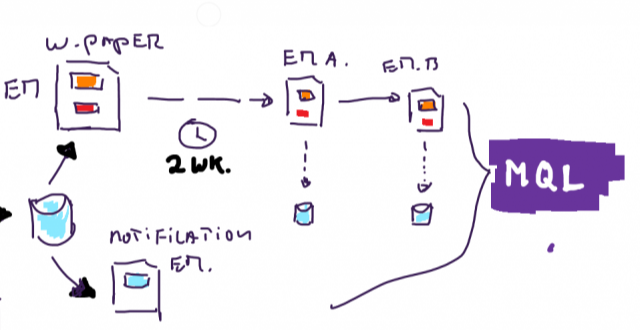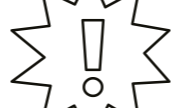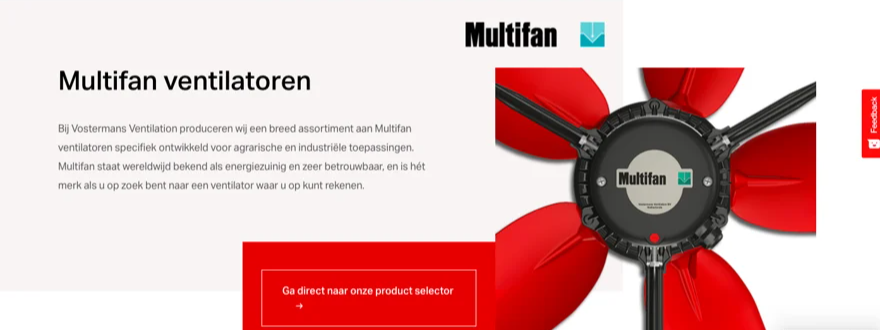The building blocks of a good lead generation approach
In B2B, lead generation is still quite traditional, while the customer as a consumer is now used to something else. In this blog, I'll give you the building blocks for a good lead generation approach.
The building blocks of a good lead generation approach
What lead generation is and why lead acquisition in B2B is so important you have read in a previous blog: 'Lead generation in B2B'. But how do you go about it? I give you the building blocks of a good lead generation approach.
A clear objective
This seems like a no-brainer, but unfortunately, in practice, this is often still not the basis of a lead generation strategy. If you don't know what you want to achieve, it's hard to determine what to do and chances are you'll end up somewhere else. You want to make an impact on organizational goals. Therefore, choose the path that is most likely to be successful. To do so, determine the following:
- Which proposition do you want to focus on in which market?
[Action] define the Proposition Market Combination (PMC) you will target. Dare to choose! - What goals do you pursue?
[Action] state what the result of your lead generation approach should be (SMART). Use experience figures and possibly benchmarks to validate whether they are realistic goals. Understanding the current 'funnel' is an advantage.
Now that you know this, you can move on to the next step. Test all subsequent steps again and again against the goals you have set here. This way you avoid plans that get out of hand and do not contribute to your goals.
A razor-sharp Buyer Persona
Once you know which PMC you are going to focus on, you can start looking for the people you want to reach with your strategy. A good way is to visualize the entire Decision Making Unit (DMU). In doing so, answer the question of who is involved at what point in the buying process and what decision power this person has. This way you identify, among other things, which people are actively looking for a solution, which people influence the decision process and who makes the decisions at what point.
For your lead generation strategy, you then choose those who will actively seek the solution you can offer. Note that the buyer is usually acting on behalf of someone else. Who is that? Who benefits from your solution(s)? Choose a primary and secondary and proceed with that. From these you are going to create a Buyer Persona. A Buyer Persona is a semi-fictionalization of your buyer, telling you what his goals, challenges, pains and gains are.
Make sure your buyer persona is razor sharp! You want to understand him exactly. Get inside his head and try to understand what his goals and challenges are. And try to figure out what "pains" he experiences when doing his job and what "gains" help him. A good way to do that is to brainstorm in a multidisciplinary team using the Value Proposition Canvas model. Get a broad view and then funnel to the most important jobs, pains and gains. And don't stay on the surface! Definitely go two to three levels deeper and more personal. That's when you get the best results.
If you know what your buyer persona's real pains and challenges are then you can create a good Buyer Persona profile.
The Buyer Journey to guide your content strategy
A person goes through a buying process with every purchase, big or small. Whether you act as a consumer or make a purchase in a business context. We also call this buying decision process the Buyer Journey. Not to be confused with the Customer Journey, which covers the entire customer journey from becoming a customer, through being a customer to saying goodbye. The Buyer Journey focuses on the becoming a customer part of the customer journey.
The Buyer Journey is made up of a number of stages. From an Inbound Marketing perspective, three phases are often used in a nutshell; Awareness - Consideration - Decision. This is an excellent guide to start with. However, the reality is a little more nuanced. If you really want to differentiate in the phases of the Buyer Journey then you also bring that nuance to your content strategy. A good way to do that is by starting from the Cyclonic Buyer Journey (see image). 
In short, it comes down to the fact that you always go through certain steps in your buyer journey. Sometimes consciously but more often unconsciously. If you are still in the awareness phase, you are still in the process of orientation. It is not yet certain that you want to solve your problem or challenge. You understand, of course, that an aggressive sales approach at this stage does more harm than good. It's just too early. From the consideration phase, you start actively looking for solutions and looking at different options and suppliers. This is where you want to get into the short list as an organization. In the decision phase, someone is going to make a decision. This is where you want to make it easy.
A successful lead generation strategy takes these phases into account. Think carefully about what stage a potential customer is in and tailor your message and content (form) accordingly. Note: first determine the Buyer Journey and then devise the content accordingly ... not the other way around!
Optimal conversion paths
Okay... the goal was to generate leads. An average web page, blog post or social media post usually generates visitors (traffic) on your digital channels. But not yet direct leads. To become a lead, a visitor will have to at least leave data with you. Until then, someone is anonymous. But someone doesn't just leave data behind. He only does so in exchange for something of value. The further someone is advanced in the Buyer Journey, the more he is willing to share data about himself.
But how do you get that to happen?
First, by creating content that someone is willing to leave data for. Think of a trend report or a handy checklist. Or, for example, a webinar, an ROI calculator or a case study. There are all kinds of content for which someone is willing to leave their contact information. Be critical, though, because you don't want to put everything behind a form. Be selective, so that someone will experience the added value of the download.
If you've created good content, a good conversion path ensures that people will actually "request" the content. The conversion path is the path people take to your content. But people are sometimes easily distracted by other interesting information. Therefore, with a good conversion path, you want to make sure they do what you want them to do: request the content. In practice, that means something like this:
- A good call to action (CTA) in the right places on your site, in emails, etc. The CTA is often a button or link with some encouragement to especially click on it. The context of the CTA is very relevant! It should make sense.
- The CTA leads to a landing page. This page is all about getting the person to take action; fill out the form. You place that form on the landing page. Note: Ask only the absolutely necessary things you want to know, appropriate to the stage of the Buyer Journey. If you ask too much, the potential lead will not convert.
Oh yes: the landing page also contains some encouragement and information about the content you can expect. Don't distract too much, but give enough information to convince doubters. - After someone fills out the form you lead them to the thank you page. Here you confirm that you have received the request and ideally you immediately place the link (or button) to the requested content. Make it easy! Someone wants it now, so give it right away. Optionally, you can add some additional info or an additional call to action for another content piece.
- As an extra service, you also send a follow-up email, again sending the requested download and sharing any relevant information. A thank you page is sometimes quickly clicked away and then it's nice to have another email with the download. Moreover, someone can share it with others.
Especially the CTA and the landing page, you will be able to keep optimizing based on trial and error. Keep an eye on the conversions and adjust accordingly. The more conversions the more leads.
Activation, activation, activation
If you have addressed the above building blocks then you have the basis in place for generating leads. However, that is not enough, because how do people know how to find you? How will your potential lead know that you have created great content? You will have to tell and show them that somehow. So you will have to activate your content. The inbound way of activation is helpful. So don't go trying to shout the loudest via annoying ads, but make sure your content works like a magnet.
These are the ways you do that:
- Get found organically! 93% of all Internet traffic starts with a query on a search engine (source: Gartner, 2020). We call this SEO, or Search Engine Optimization. The bottom line is that your content is focused on the questions, challenges and pains your target audience has. By now you know what challenges and pains those are, so create content consistently about them. And don't forget to offer solutions!
- A great way to be found organically is through blogging. Through a series of blogs, demonstrate that you are knowledgeable about a particular topic and that you have answers to the questions out there. Trigger "awareness," help with answers and also feel free to give your opinion. And be consistent on a particular topic. Search engines like Google love that. Also consider guest blogging on platforms where your target audience is also present.
- Activate your content through social media. Do not only think about the channels on which you are active as a company, but also inspire colleagues to use their social network. After all, people still prefer to communicate with people. An active colleague with a good network can mean a lot to you. Make sure that your presence on social media is not just for sending, but that people also expect interaction from you.
- If you want to boost your lead generation, you can use advertisements. With a good paid strategy on Google (SEA) or on the social networks where you are active, you can reach people who otherwise would not find you. A paid campaign allows you to be found on keywords relevant to your potential customer and it allows you to "target" specific audiences. Okay, you pay for this service, but a good lead can just be worth it.
- Email is also still a perfect medium to activate once you have the lead. How, you'll read below.
Lead Nurturing
You've come a long way by now. You have great content and through a good activation strategy, your potential customers know how to find this content. They see the value and are happy to provide their contact information in exchange for the content. They become a lead! Goal achieved? For your lead gen campaign maybe, but ultimately you want to upgrade good leads to paying customers. That usually requires a bit more patience and help on your part.
As you already saw in the buyer journey, a potential customer goes through a number of stages. You can help them do that. By offering them content that helps them, appropriate to the phase they are in. The most direct form is through email. We often think that e-mail doesn't work these days, but the opposite is proven. E-mail is very effective, especially when it is inserted to help someone rather than overtly trying to sell something. If it is relevant then we are often actually happy to receive an e-mail. How thoughtful!
The process of helping through the stages of the buyer journey is called lead nurturing. Basically, we try to help the lead warm up more and more until he is ready to take the final step. This is easier said than done. It really does take some thought to do this right. And once you get to that point, then ideally use a good marketing automation program to automate this process. With that in mind, definitely delve into HubSpot. According to many, this is the marketing automation and lead generation platform out there today.
Good luck in devising and implementing your lead generation strategy!

Want to get the most out of HubSpot? Subscribe to our newsletter, follow us on LinkedIn, or attend our HubSpot User Days!
Explore HubSpot User DaysShare this
You May Also Like
These Related Stories

Lead generation in B2B: Generating leads effectively, how?

Sales and Marketing: 8 tactics for better collaboration


